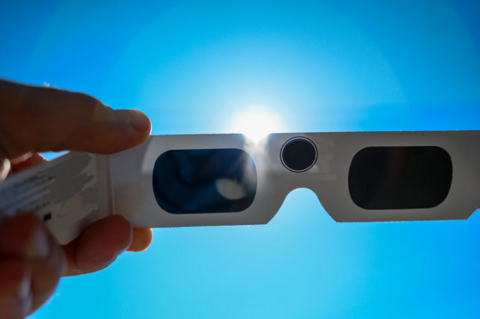
Solar Eclipse 2024
On April 8, a total solar eclipse will pass over North America, including parts of Southern Ontario, which will experience its first total eclipse in almost 100 years.
A solar eclipse occurs when the Moon passes between the Sun and the Earth, blocking out some of the Sun's light. During a total eclipse, the Moon completely blocks the Sun, plunging us into darkness for up to several minutes.
Read on to learn more about the eclipse, and what UW are doing to celebrate!
How common is a total solar eclipse?
Worldwide, a total eclipse generally occurs once every few years. However, from any particular location, they are very rare – the eclipse in April will be the first in Southern Ontario since 1925, and the last one until 2144!

What is the WCA doing to celebrate the eclipse?
The Waterloo Centre for Astrophysics will be organizing several public events where you can learn more about the total eclipse, including an Astronomy on Tap night (for adults only!), and a talk on the Science of Solar Eclipses at Kitchener Public Library. We will also be taking part in a special event alongside researchers from English, Mathematics, Ecology and Optometry, looking at different insights and perspectives on the total eclipse.
What causes a total solar eclipse?
The Sun is about 400 times larger than our Moon, but it is also about 400 times further away from the Earth. This means that they look the same size in the sky. A total solar eclipse occurs when the Earth, Moon and Sun align with one another, and the Moon completely blocks our view of the Sun. If this alignment is not perfect, the Sun might only be partially blocked, leading to a partial solar eclipse.
How can I watch the eclipse?
Even during a total eclipse, looking at the Sun is dangerous and can cause permanent damage to your eyes. In order to watch the eclipse safely, you must wear eclipse glasses that satisfy the ISO 12312-2:2015 safety standard. The only exception to this is during "totality", when the Sun is fully blocked by the Moon. During this time it is safe to remove your glasses, but you must put them back on as soon as any part of the Sun becomes visible again.
The eclipse can also be viewed using a pinhole camera. You can either purchase one of these, or make one yourself.
Where can I learn more?
There are plenty of places online to read more about the eclipse, and find educational resources:
You can visit timeanddate.com for a detailed map of where to view the total eclipse, or a partial eclipse.
Where can I see the eclipse?
Waterloo will see only a partial eclipse on April 8 – approximately 99% of the Sun will be blocked by the Moon. However, a total eclipse will be visible from much of Southern Ontario, so you don't need to travel far to see one! Locations underneath the blue dashed line on the map below will experience a total eclipse, and the duration of the eclipse will be greatest at locations closer to the yellow line. In Southern Ontario, totality will be at around 3:20pm.
